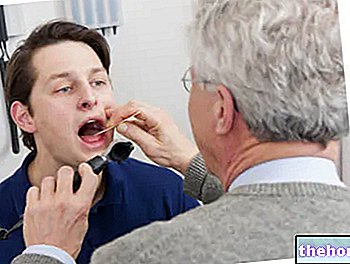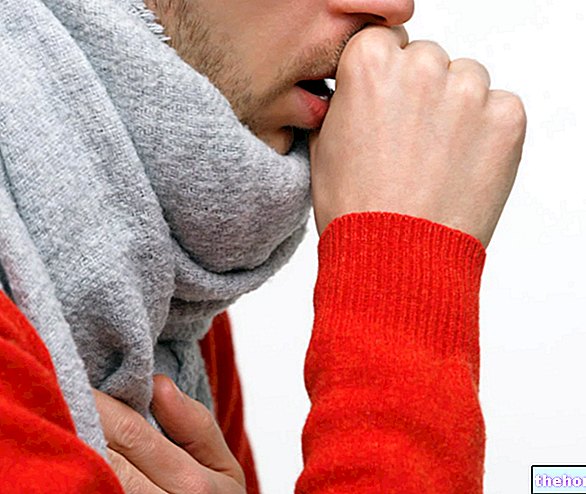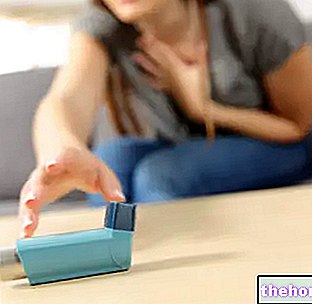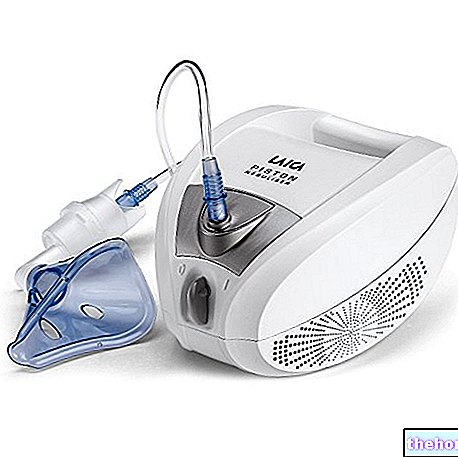What is Bronchoscopy?
Bronchoscopy is an "instrumental investigation aimed at" visual exploration of the airways of greater caliber (larynx, trachea and bronchi), with mainly diagnostic but also therapeutic purposes.
Bronchoscopy is performed by introducing a thin and flexible instrument into the nose or oral cavity, consisting mainly of optical fibers and equipped with a light source and a camera at the end. If the doctor deems it appropriate, it is also possible to take small samples during bronchoscopy. of tissue that will be subsequently examined in the laboratory. The microscopic examination of these biopsy samples, becomes very useful - for example - to reach a certain diagnosis of lung cancer and to determine its histological type.

Indications
Bronchoscopy is mainly used for diagnostic purposes, to investigate the origin of particular symptoms or to obtain more information in the presence of anomalous instrumental findings.
Main indications
- chronic cough of undefined origin that has lasted for at least three months,
- hemoptysis (expectoration with blood),
- suspicion of a foreign body in the tracheobronchial tree,
- atypical chest X-ray with suspicious "shadows",
- inhalation of toxic gases or chemicals,
- abnormal cytology of phlegm,
- suspicion of lung infections,
- sarcoidosis,
- narrowing or stenosis of the tracheobronchial tree.
Bronchoscopy is also often used for the diagnosis, staging and follow-up of lung tumors, as well as in the search for any lung metastases or extensions of tumors from neighboring organs (for example from the esophagus).
Bronchoscopy can also turn into a therapeutic technique if necessary, capable, for example, of draining abscesses, restoring the patency of occluded or restricted airways, removing foreign bodies, aspirating accumulations of fluids or mucous plugs, destroying any tumor masses (laser ablation) and perform a diagnostic or therapeutic flushing of the airways.
How is it done?
Bronchoscopy involves the insertion of a flexible and relatively thin tube (the caliber does not exceed that of a pencil) into the major airways of the lungs.
Thanks to the aid of a light source mounted on the apex and the optical fibers, the instrument (called a bronchoscope) allows you to visually explore the airways. The most recent bronchoscopes are also equipped with a special camera, which sends the recorded images to the screen.
Before Starting the Exam
Before starting bronchoscopy, you are usually asked to remove any glasses, contact lenses, removable dental appliances, wigs, make-up, jewelry, and hearing aids.
Sedatives and local anesthesia
The procedure is typically not painful, but it can cause some discomfort. To eliminate or at least mitigate this effect, a relaxing drug is administered intravenously before the bronchoscopy, and a "local anesthesia of the respiratory tract (with a gel in the nose or with a spray through the mouth; both generally leave an unpleasant aftertaste. ). Often, by intramuscular injection, a drug (atropine sulfate) is administered about 30 minutes before the examination, which reduces secretions and can induce a feeling of dryness in the mouth and throat.
Any biopsies do not cause significant pain to the patient; these instrumental maneuvers are performed by means of special pliers made to slide in the operative channel of the bronchoscope, until reaching the sampling area.
monitoring and security
As a precautionary measure, an "infusion" in the forearm of the patient can be performed, which if necessary guarantees an intravenous access for the injection of liquids or any drugs during bronchoscopy. At the same time, unless it has already been done by the attending physician, a blood sample is taken to check the blood clotting function.
During the examination, parameters such as blood pressure, heart rate and oxygen levels in the blood are continuously monitored. Thus, if necessary, supplementary oxygen can be administered through one nostril.
duration of bronchoscopy
In all, the bronchoscopy lasts about 20-30 minutes, although it is necessary to take into account the long time necessary for the preparation (clinical examination, drug administration) and the hospital stay (after the examination the patient is detained for a couple of hours to ascertain that there are no complications and dispose of the peak of effectiveness of the sedative).
Bronchoscopy: execution and risks "




























